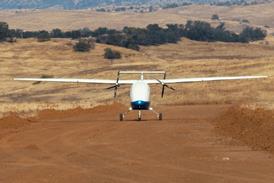Monitoring pilots' brain blood flow and oxygen levels is the focus of a new NASA study to examine the impact of stress and fatigue in combination with a high cockpit workload.
The aeronautics agency is studying the interaction between pilots and increasingly automated flightdecks as part of its aeronautics research mission directorate's integrated intelligent flight deck project. Functional near-infrared spectroscopy, also known as fNIRS, and other non-invasive imaging technology will be used to measure brain cortex blood flow and the oxygen concentration.
"Flying an aircraft involves multi-tasking that potentially can push the limits of human performance. When we increase stress and difficulty we can see how the subject reacts, measuring brain activity during overload," says biomedical engineer Angela Harrivel, NASA Glenn Research Center's team leader for the research.
The study involves 15 test subjects who will don headgear fitted with optical or electrical sensors and perform basic functional tasks. More complex, stress inducing tasks will be conducted in a full motion cockpit simulator. The tests measure electrical brain activity to validate spectroscopic data obtained through the fNIRS sensors.
Source: Flight International
















